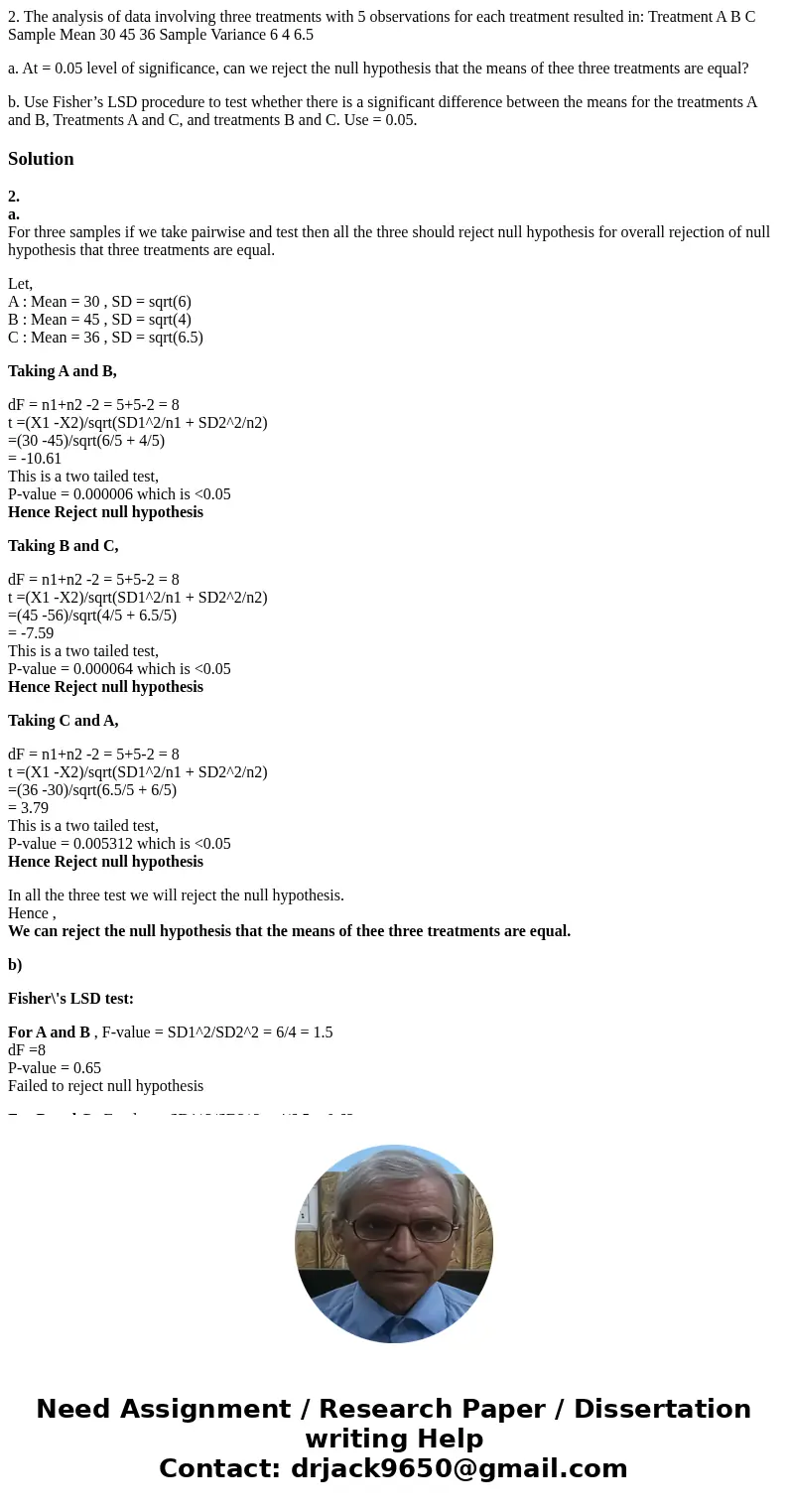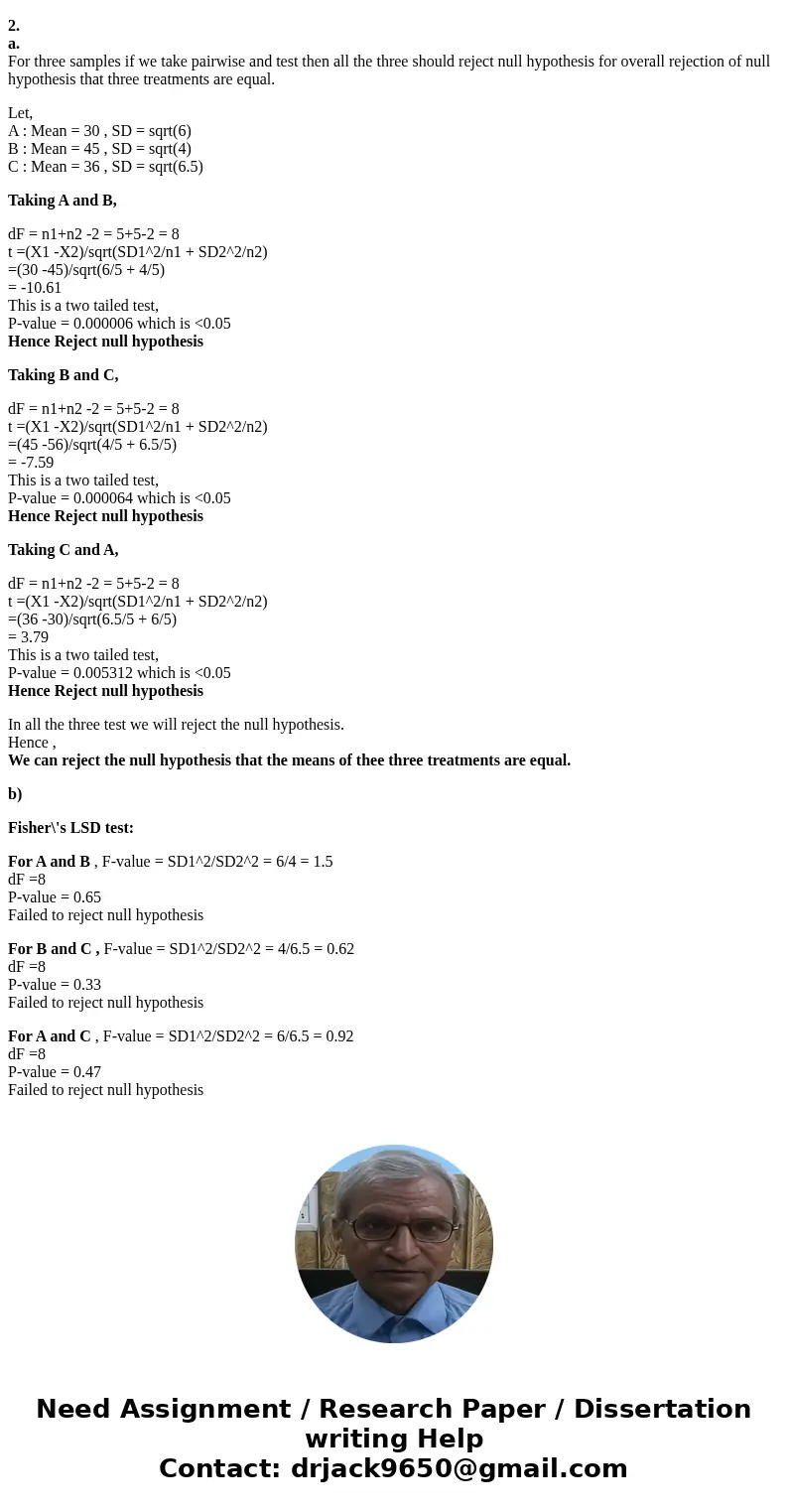2 The analysis of data involving three treatments with 5 obs
2. The analysis of data involving three treatments with 5 observations for each treatment resulted in: Treatment A B C Sample Mean 30 45 36 Sample Variance 6 4 6.5
a. At = 0.05 level of significance, can we reject the null hypothesis that the means of thee three treatments are equal?
b. Use Fisher’s LSD procedure to test whether there is a significant difference between the means for the treatments A and B, Treatments A and C, and treatments B and C. Use = 0.05.
Solution
2.
a.
For three samples if we take pairwise and test then all the three should reject null hypothesis for overall rejection of null hypothesis that three treatments are equal.
Let,
A : Mean = 30 , SD = sqrt(6)
B : Mean = 45 , SD = sqrt(4)
C : Mean = 36 , SD = sqrt(6.5)
Taking A and B,
dF = n1+n2 -2 = 5+5-2 = 8
t =(X1 -X2)/sqrt(SD1^2/n1 + SD2^2/n2)
=(30 -45)/sqrt(6/5 + 4/5)
= -10.61
This is a two tailed test,
P-value = 0.000006 which is <0.05
Hence Reject null hypothesis
Taking B and C,
dF = n1+n2 -2 = 5+5-2 = 8
t =(X1 -X2)/sqrt(SD1^2/n1 + SD2^2/n2)
=(45 -56)/sqrt(4/5 + 6.5/5)
= -7.59
This is a two tailed test,
P-value = 0.000064 which is <0.05
Hence Reject null hypothesis
Taking C and A,
dF = n1+n2 -2 = 5+5-2 = 8
t =(X1 -X2)/sqrt(SD1^2/n1 + SD2^2/n2)
=(36 -30)/sqrt(6.5/5 + 6/5)
= 3.79
This is a two tailed test,
P-value = 0.005312 which is <0.05
Hence Reject null hypothesis
In all the three test we will reject the null hypothesis.
Hence ,
We can reject the null hypothesis that the means of thee three treatments are equal.
b)
Fisher\'s LSD test:
For A and B , F-value = SD1^2/SD2^2 = 6/4 = 1.5
dF =8
P-value = 0.65
Failed to reject null hypothesis
For B and C , F-value = SD1^2/SD2^2 = 4/6.5 = 0.62
dF =8
P-value = 0.33
Failed to reject null hypothesis
For A and C , F-value = SD1^2/SD2^2 = 6/6.5 = 0.92
dF =8
P-value = 0.47
Failed to reject null hypothesis


 Homework Sourse
Homework Sourse